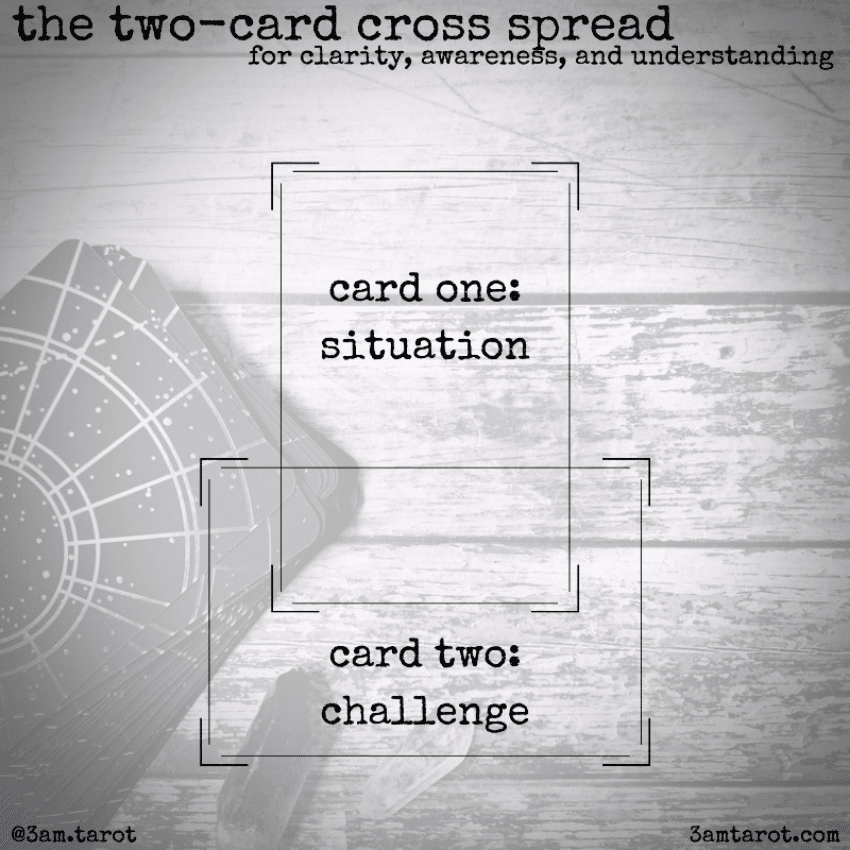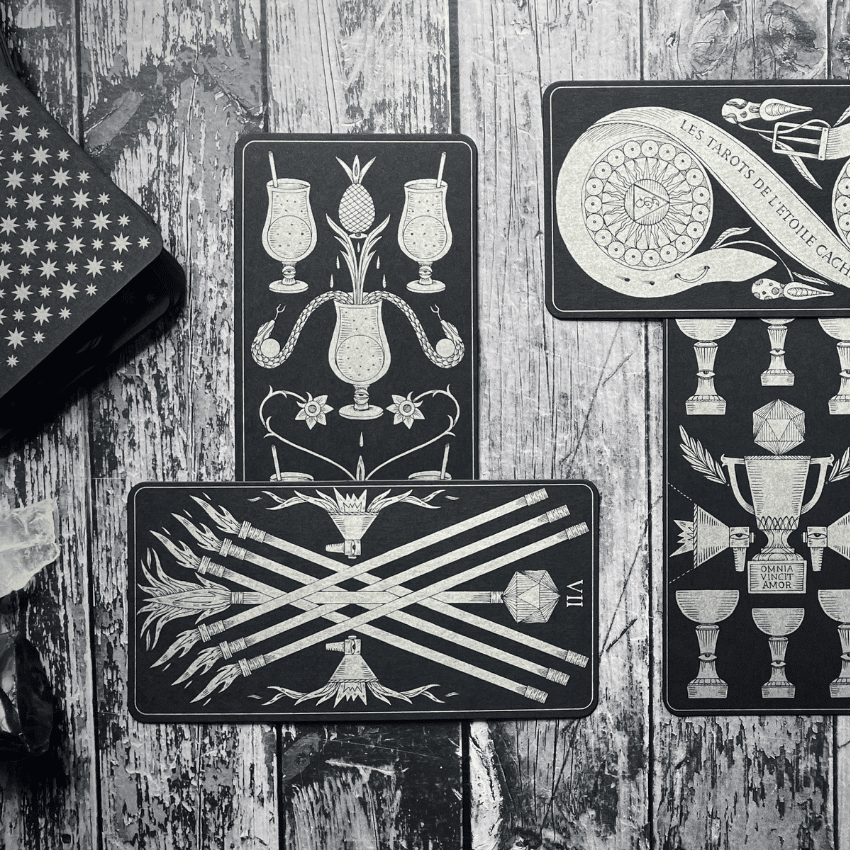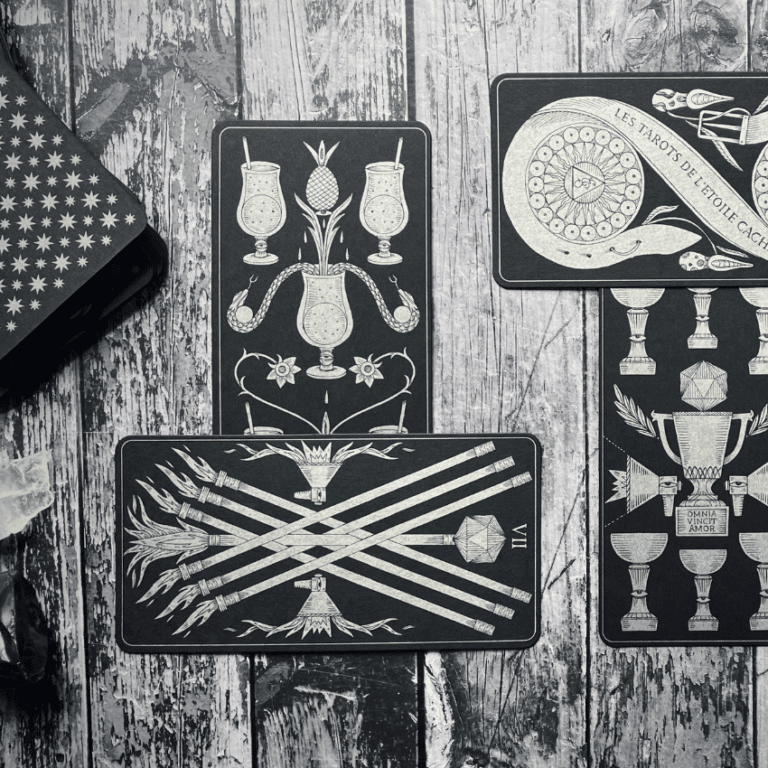There are times when you want to spend an hour on a Tarot reading, choosing the perfect spread to get to the heart of your concerns, carefully working through every card and aspect of your question, and digging into layers of meaning. But there are other times when you just want a quick and dirty answer, something that you can use to get a fast jolt of energy and inspiration to carry forward.
And while the beloved ten-card Celtic Cross is a classic for a reason, it can also feel like a major commitment — especially if it isn’t a spread that you use often or if you’d rather have a practical piece of advice to work with. Instead, I tend to favor short spreads, particularly if you’re just getting started with the Tarot.
Focusing on a few positions instead of a dozen or more can make it easier to understand what the cards are trying to communicate and can feel less overwhelming regardless of your level of experience with Tarot.
How to Use the 2-Card Cross
The two-card cross may be based on the first two positions of the iconic Celtic Cross spread, but you can also pull these cards all on their own to simplify your question or situation. This is a great technique to utilize when you want to understand what is getting in your way.
If you’re feeling stuck, even if you aren’t sure why, pulling two cards in this format can bring immediate clarity and help you figure out what to examine, put energy toward, or move away from.
Sometimes this may be all that you need, while other times, it may point you toward a larger spread that you can use to dig more deeply into the situation — but using these two cards together can be really empowering and help you see a challenge for what it is.
With only two cards, this spread is a powerful way to get right to the heart of the matter.
The first card offers insight into your current situation, challenge, question, or difficulty, framing it in a specific way that may help introduce a different viewpoint on what is going on. Whether internal or external, the first card helps to define the issue.
The second card in the layout defines the challenge, obstacle, or problem tripping you up. It can help you see what is blocking progress, limiting clarity, or standing between you and your goal.
And in looking at how these cards relate to each other, what they have in common, and any friction that exists between them, you can start to identify potential solutions.
Read this next: What Tarot Deck You Should Buy, Based on Your Zodiac Sign

Because this spread is a rapid-fire card duo rather than a lengthy multi-card adventure, I’m offering three different examples to help you see how this layout can work for you.
As always, these are merely examples and were not written with any particular person, situation, or question in mind.

Example One
Situation: 5 of Cups
In this first sample reading, the situation is defined by the 5 of Cups: a card that is often tied to a major change or disruption in one’s emotional state.
This can speak to heartache or despair, grief, or a sense of relational loss, but it can also indicate that something internal is happening that is forcing us to grapple with our intuition, emotions, or community in a necessary but challenging way.
Challenge: 7 of Wands
The challenge card is the 7 of Wands, a card that is often representative of independent creativity, finding meaning within our own work, and being willing to stand up for our vision of the future.
In light of the situation being an emotional one, this card indicates that the querent may feel particularly isolated in their desire for change and meaning but could potentially find purpose, power, and passion in articulating their needs, asking for support, and allowing others to bolster their confidence.
Consider: How can we defend our ideas, our goals, and our longings?
Example Two
Situation: 7 of Cups
For the second sample, I pulled the 7 of Cups in the position of the situation. This card is all about seeking deeper meaning in our fantasies and desires and sometimes indicates that we are getting caught up in the haze of possibility rather than committing to a specific future, wish, or ambition.
In this position, it might reveal that the querent is losing themselves in illusion and fantasy rather than thinking clearly and rationally about what they want.
Challenge: 2 of Pentacles
Our second card for this reading gives some additional insight into a challenge, and in this case, that challenge is the 2 of Pentacles. A card that is usually tied to balancing resources, making decisions about growth, and clarifying our long-term goals, I read this card as an urging to be practical about all that lies ahead, as a bit of advice on how to navigate the current situation.
The 7 of Cups feels very dreamy, but this card is one of grounding, intentionality, and patience.
How can we find a balance between desire and devotion? What feels good to imagine, and what are we actually willing to commit to?
Example Three
Situation: 4 of Wands
Our first card in this final reading is the 4 of Wands, a card that often speaks to establishing foundations for creativity, expression, passion, desire, and soul-searching. This card tends to be associated with stability and confidence as we create structures for our work that empower us to continue moving forward at a steady, certain pace.
The 4 of Wands is often a welcome card in readings, so seeing it in this position indicates that things may feel really joyful, empowering, and generally positive. There may not be a clear problem for the querent.
Challenge: 4 of Swords
Presenting a challenge to the first card, the 4 of Swords is usually interpreted as a need for mental boundaries, intellectual protection, and necessary rest.
Given that our situation card of the 4 of Wands can indicate stability, joy, and progress, the 4 of Swords serves as a reminder to pace ourselves, to take breaks when we need them, and to protect our tender hearts and minds even as we continue moving forward.
While this reads to me as more of an advice card, the 4 of Swords in this position is a reminder to protect our dreams and ideas, to balance power with purpose, to be clear about our goals, and be structured about the ways that we pursue them.
What Situations Will You Uncover with Tarot?
All three of these examples demonstrate different kinds of situations — and not all situations have to necessarily be fraught with a challenge.
Sometimes, the cards can simply urge us to acknowledge something about where we are, to celebrate or honor or take pride in something good that is happening that we may be taking for granted. In those cases, the challenge card may be more of an opportunity for growth or movement rather than an obstacle that is getting in our way.
Read these cards as a pairing, like a conversation, and see where their insights can take you. Happy reading!
This post features cards from Le Tarot de L’étoile Cachée.
Related article: How to Expertly Shuffle Your Tarot Cards
